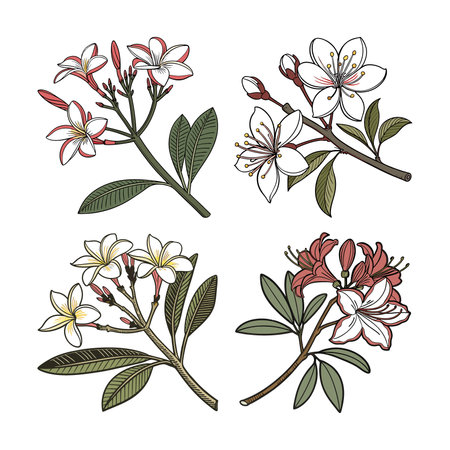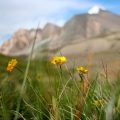Introduction: Embracing the British Countryside
There is something truly special about wandering through the British countryside, where each season brings its own distinct beauty to our woodlands and meadows. From the delicate blooms of springtime bluebells carpeting ancient forests to the fiery hues of autumn leaves rustling beneath our boots, the ever-changing scene offers a sense of wonder for all ages. For families and nature lovers alike, noticing the subtle shifts in wildflowers and trees as the months pass can become a cherished tradition, one that connects us with the rhythms of rural life. These seasonal transformations not only shape our landscapes but also weave themselves into our daily routines—inviting us to pause, explore, and appreciate the natural treasures right on our doorstep.
Spring Awakening: Bursting Blooms and Fresh Foliage
As winter gently loosens its grip, spring brings British woodlands and meadows to life with a vibrant display of colour and fragrance. This season is truly magical, as beloved wildflowers emerge from the earth and ancient trees begin to leaf out, signalling new beginnings for both nature and families eager to explore the great outdoors.
Favourite Spring Wildflowers
One of the most iconic sights in Britain during spring is the delicate bluebell carpet. These bell-shaped blossoms create a breathtaking sea of blue beneath towering trees, especially in ancient woodlands. Alongside them, primroses pop up with their soft yellow blooms, often found on grassy banks and woodland edges. Wood anemones also join the show, their star-like white flowers swaying gently in the breeze. These early bloomers offer a welcome burst of colour after months of grey skies.
Where to Spot Spring Wildflowers
| Wildflower | Best Locations |
|---|---|
| Bluebells | Ancient woodlands (e.g., Ashridge Estate, Hallerbos) |
| Primroses | Meadows, grassy banks, woodland edges |
| Wood Anemones | Damp woods, shady hedgerows |
The Budding of Ancient Trees
Spring doesn’t just bring flowers—ancient oaks and hawthorns begin to unfurl their fresh leaves, marking the start of a new growing season. The oak’s tiny, bright green leaves appear first, followed by clusters of catkins that are vital for early pollinators. Hawthorn trees soon follow suit, covering themselves in frothy white blossoms that fill the air with sweet scent. For many families, these changes signal perfect opportunities for nature walks, scavenger hunts, and picnics under budding branches.
Signs of Spring in British Woodlands and Meadows
- Carpets of bluebells creating picture-perfect scenes
- Primroses dotting grassy patches with gentle colour
- Buds and fresh leaves on old oaks and hawthorn hedges
Embracing spring’s arrival through these signs helps children and adults alike reconnect with nature’s rhythms. It’s a special time for British families to enjoy simple pleasures—like spotting a robin among primroses or listening to bees buzzing around hawthorn blossoms—making memories that last long after spring has faded into summer.

3. Summer Splendour: Meadows and Majestic Green Canopies
Summer in Britain is a true spectacle of nature, as the countryside bursts into life with vibrant colours and lush greenery. Across meadows and along hedgerows, wildflowers such as poppies and daisies take centre stage, painting the landscape in joyful reds and cheerful whites. These beloved blooms are more than just beautiful—theyre a sign that summer is in full swing, inviting families to picnic among the petals or simply enjoy a stroll through flower-filled fields.
In parks and gardens, the trees reach their peak glory during these warm months. The horse chestnut, with its broad leaves and clusters of white blossoms now replaced by glossy conkers, creates cooling shade perfect for lazy afternoons. Lime trees (or linden), another British favourite, fill the air with their subtle fragrance while their leafy canopies provide welcome respite from the sun’s rays. These majestic giants become gathering spots for friends and family to share laughter under dappled sunlight.
The combination of wildflower meadows and grand green canopies makes British summers truly special. Whether you’re wandering through a local park or exploring the countryside, summer offers countless opportunities to connect with nature. Don’t forget to look up as well as down—the view through a canopy of leaves on a sunny day is one of those simple pleasures that make British summers unforgettable.
4. Autumn Transformation: Colourful Leaves and Seed Gatherings
As the crisp air of autumn sweeps across Britain, woodlands and hedgerows are transformed into a kaleidoscope of colour. This is the time when iconic trees like sycamores, maples, and beeches put on their most spectacular show. Their leaves turn from lush greens to brilliant shades of gold, amber, and crimson, carpeting the ground and delighting families out for an autumn walk. It’s a magical moment for children and adults alike, inviting everyone to kick through piles of leaves or collect the prettiest ones for crafts at home.
Autumn isn’t just about striking foliage; it’s also the season of seed gathering. Many late-blooming wildflowers, such as knapweed and teasel, begin to set seeds, providing a vital food source for local wildlife as temperatures drop. Birds, squirrels, and even insects rely on these seeds to see them through the colder months ahead. For keen nature spotters, this is a wonderful opportunity to observe how British flora supports our native fauna.
Tree Leaf Colours in British Autumn
| Tree | Typical Autumn Leaf Colour |
|---|---|
| Sycamore | Golden yellow to light brown |
| Maple | Fiery red to deep orange |
| Beech | Coppery bronze to warm gold |
Wildflowers Setting Seeds in Autumn
| Wildflower | Type of Seed/Benefit |
|---|---|
| Knapweed | Seeds attract finches and sparrows |
| Teasel | Heads provide seeds for goldfinches |
| Poppy | Tiny black seeds feed small mammals and birds |
This season is not only visually stunning but also plays a crucial role in the lifecycle of many plants and animals. When you’re out enjoying the autumn scenery with your family, take a moment to notice the busy activity around fallen seeds or the rustling leaves—nature is preparing for winter, making autumn walks both beautiful and educational.
5. Winter Rest: Bare Branches and Hidden Life
As winter arrives across Britain, the landscape transforms into a quieter, more contemplative scene. The vibrant colours of autumn fade, leaving trees standing tall with bare branches silhouetted against pale skies. Yet, there is a subtle beauty to these frost-kissed woodlands and meadows that invites us to slow down and take notice.
Frosty Mornings and Evergreen Resilience
The sparkle of frost on grass and hedgerow brings a magical touch to winter walks. Among the sleeping trees, evergreens like holly and yew stand out with their glossy leaves and deep green hues. These resilient species not only add life to the muted scenery but also provide much-needed shelter and berries for birds during the colder months.
The Role of Leaf Litter
While it may be tempting to tidy fallen leaves away, leaf litter is vital for British wildlife in winter. Beneath this soft blanket, insects hibernate, hedgehogs find shelter, and fungi flourish. By allowing some leaves to remain undisturbed in gardens or local parks, we help support the hidden web of life that carries our wild spaces through the coldest days.
A Season to Appreciate Nature’s Pause
Winter is a time when nature takes a well-deserved rest, gathering strength for the year ahead. Even though many wildflowers and trees appear dormant, life continues quietly all around us. Taking a moment to appreciate this slower pace can help us reconnect with the changing rhythms of the British countryside—and remind us that beauty often lies in simplicity.
6. Family-Friendly Ways to Experience the Seasons
There’s nothing quite like exploring Britain’s changing seasons as a family. Whether you’re in the heart of the countryside or enjoying your local park, there are plenty of simple ways to connect with wildflowers and trees throughout the year.
Go on Nature Walks
Lace up your wellies and head out for a stroll together. Encourage children to look out for seasonal blooms, from early spring bluebells to autumnal conkers. Try creating a spotter’s chart of local flowers and trees—tick them off as you find them!
Create Simple Nature Crafts
Gather colourful leaves, fallen petals, or interesting twigs during your walks. Back at home, use these treasures for easy crafts: make leaf rubbings with crayons, press wildflowers between books, or create a seasonal collage for your kitchen fridge.
Start a Seasonal Scrapbook
Keep memories alive by putting together a scrapbook. Collect photos, pressed flowers, and handwritten notes about what you’ve spotted. It’s a lovely way for children to see how the landscape changes month by month.
Join Local Events and Workshops
Many British communities hold guided woodland walks or nature workshops, especially in spring and autumn. These are perfect opportunities for families to learn from local experts while enjoying time outdoors together.
Encourage Curiosity and Conversation
Ask open-ended questions as you explore: What colours can you see? How do the leaves feel? Which tree is tallest? This sparks curiosity and helps little ones connect more deeply with nature’s rhythms.
By making seasonal changes part of family life—through hands-on activities and shared discoveries—you’ll nurture a lifelong love for Britain’s wildflowers and trees, one walk at a time.


